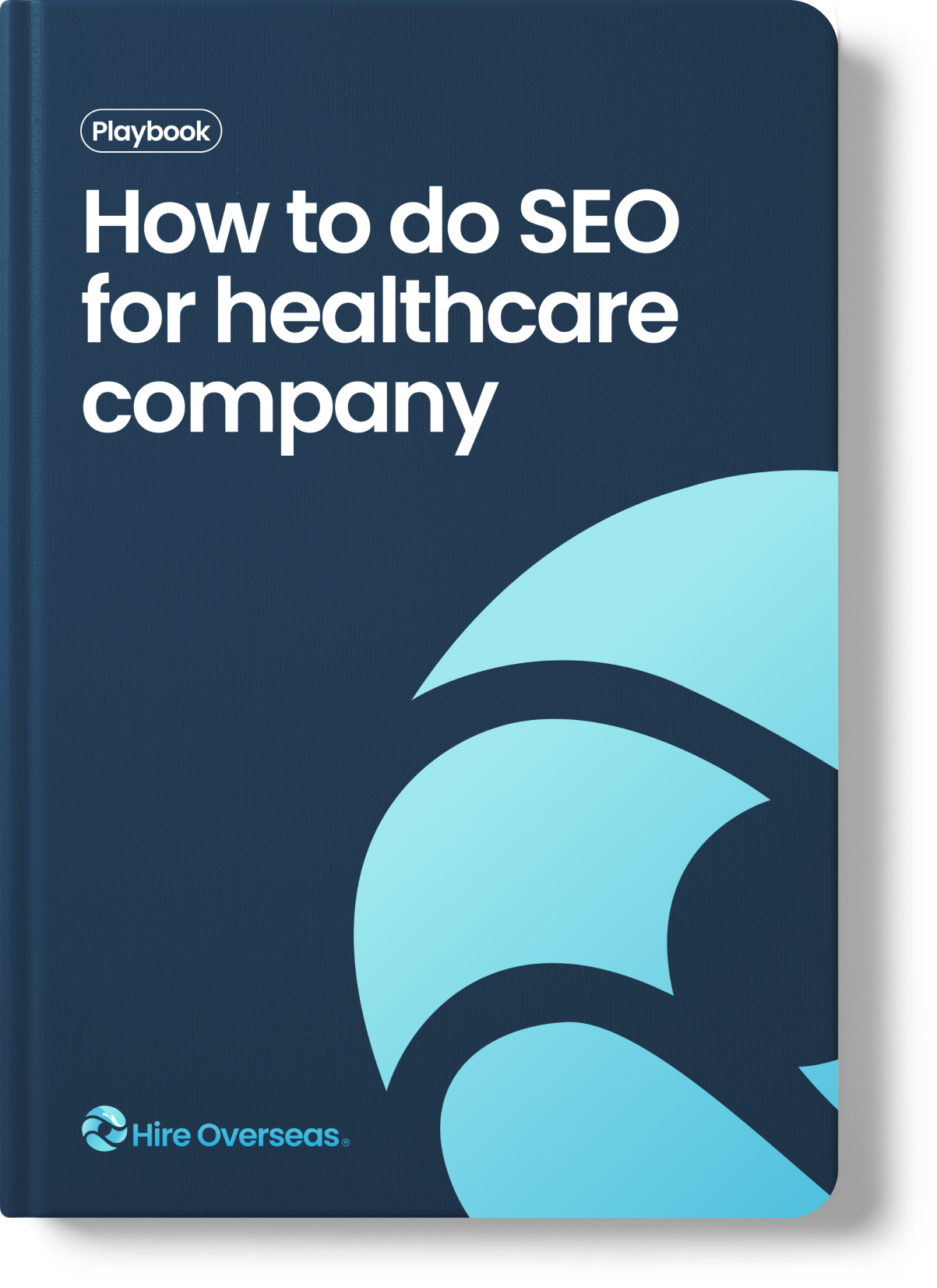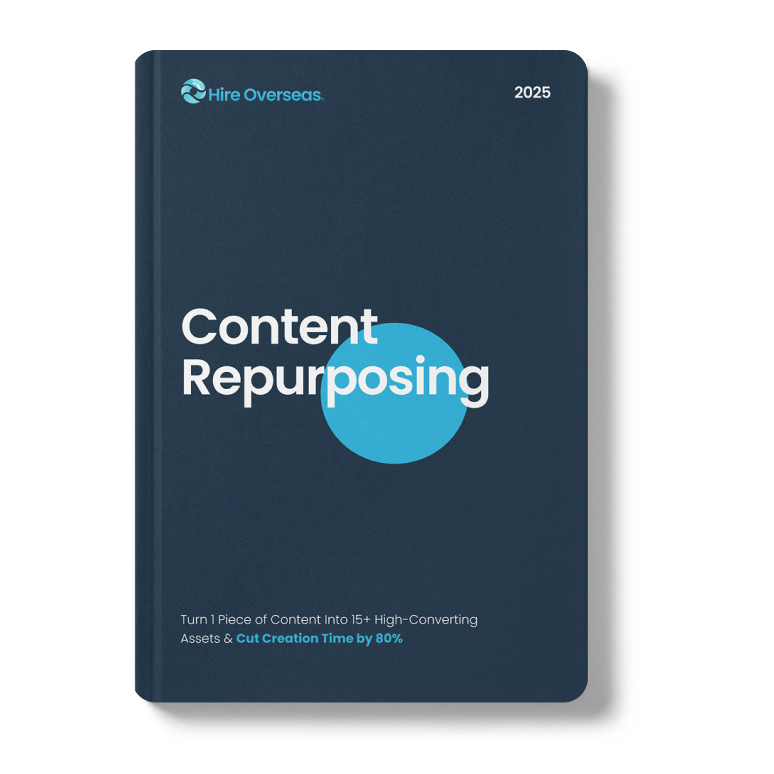How to do SEO for healthcare company 3

A modern guide to building medically credible, search-optimized content that ranks and earns trust.
Everyone knows that the SEO for the healthcare industry isn’t like any other kind of search optimization — it’s higher stakes, tougher to win, and impossible to fake. Patients aren’t just searching for answers; they’re searching for trust. And with Google and AI tools raising the bar for medical accuracy, only brands that publish expert-reviewed, evidence-based content will stand out.
If you want your healthcare company to rank, convert, and earn authority, you need more than keywords — you need a system built for credibility and consistency.
This playbook shows you exactly how to create world-class healthcare content that dominates search and becomes the resource patients rely on.
The Golden Rule of Healthcare SEO: Create the Best Content in the World
If you take one principle from this playbook, it’s this:
Every piece of healthcare content you publish must be the single best resource on that topic — globally.
That’s not exaggeration; it’s the new SEO reality for healthcare brands.
[playbook-cta_component]
What Makes Healthcare SEO Different
Healthcare SEO goes beyond keywords and backlinks. It demands medical accuracy, regulatory compliance, and visible expertise — because in health, misinformation can cost trust, credibility, and even lives.Here’s the most important aspect of SEO for healthcare companies.
- Accuracy over volume. Every claim must be evidence-based and traceable to a peer-reviewed source.
- Compliance. Follow HIPAA, FDA, and FTC rules when referencing medical advice or treatments.
- Compassion. Write for anxious patients, not algorithms.
- Transparency. Show who wrote, who reviewed, and when it was last updated.
Brands That Model This Well
- Healthyish Content – A masterclass in authoritative, E-E-A-T-driven SEO.
- Rupa Health – Proof that medical accuracy and scale can coexist.
- WebMD & Healthline – Still the industry’s gold standards for reviewed content and structure.
Action Steps
- Prioritize E-E-A-T: Visible authors, reviewers, citations, and disclaimers on every page.
- Publish only A-level articles (see rubric below). If it’s not excellent, it’s not live.
- Refresh every six months. Stale health content loses both trust and ranking power.
- Use schema (author, reviewedBy, MedicalWebPage) for machine readability.
Case Study: How Rupa Health Built Its Content Machine
Rupa Health is one of the best modern examples of scaling healthcare SEO without compromising medical integrity.
Their Starting Point
They began publishing 20 articles a month. Within a year, that grew to 200+ medically reviewed articles per month, all high-quality and consistent.
How They Built It
1. Keyword Planning
- An SEO specialist (hired overseas) handled monthly keyword strategy.
- Selected ~200 article topics balancing difficulty, search intent, and medical relevance.
- All topics tracked in a shared Google Sheet for transparency.
2. Content Outlines
- Each outline included target keyword, intent, headers, subtopics, and reference sources.
- The SEO lead linked each outline to a writer and reviewer.
3. Writing Team
- Built a network of 20–30 practitioner writers — MDs, NPs, RDs, and PhDs.
- Each draft required citations for every claim, with peer-reviewed or government sources only.
4. Editorial Rubric
- Editors graded every article A–D.
- Only A-level content was published; A+ earned bonuses.
- “Good enough” never went live.
5. Medical Review
- A lead medical editor checked all claims.
- A designer produced medical diagrams and infographics.
- Overseas physicians double-checked visuals and medical accuracy.
6. Compliance & Uploading
- A virtual assistant managed uploads, structured data, and content coordination.
- Each post went through accessibility and schema validation before publishing.
7. Scaling Budget
- Initial: $5K/month.
- Full scale: $30–50K/month.
- Roles: SEO Specialist • Content Editor • Medical Editor • Practitioner Writers • Designer • VA.
Action Steps
- Implement a grading rubric (A/B/C/D). Only A-level articles go live.
- Centralize workflows using one content Sheet shared by all roles.
- Reward A+ performance with bonuses to reinforce quality.
- Track every article’s review, schema, and refresh status.
How to Build Your Own Healthcare SEO Engine
You don’t need a large team to compete. Start with a lean, repeatable workflow that prioritizes quality, medical accuracy, and scalable SEO structure from day one.
Core Team Roles
[playbook-cta_component]
Core Production Workflow
1. SEO Creates Briefs
Plans keywords, outlines, and search intent. Ensures every topic aligns with audience needs, ranking potential, and clinical relevance before assigning to writers.
2. Writers Draft and Cite
Practitioner writers craft medically accurate articles, citing authoritative sources like PubMed or NIH to maintain credibility and comply with E-E-A-T standards.
3. Editor Ensures Clarity
Refines structure, tone, and readability. Simplifies complex medical concepts for patients while preserving scientific accuracy and brand voice consistency.
4. Reviewer Approves Medically
A licensed clinician verifies all claims, data, and recommendations. Confirms compliance with current medical guidelines and adds reviewer credentials for transparency.
5. Designer Adds Visuals
Creates custom diagrams, infographics, and tables to explain key ideas clearly. Visuals improve engagement, accessibility, and SEO performance.
6. VA Uploads and Tracks Updates
Publishes approved content, applies schema and tags, and maintains the production tracker for version control and future refresh reminders.
Action Steps
- Use a shared production tracker. Include outline links, status, grades, authors, and reviewers.
- Automate update reminders. Refresh every 180 days.
- Document your SOP. Everyone follows the same checklist.
Publishing for Medical Authority
In healthcare SEO, perceived authority is everything. Patients, doctors, and algorithms must all trust your content instantly.
Author & Reviewer Attribution
Use clear dual bylines- See examples:
Written by: Sarah Lee, MS, RDN
Medically reviewed by: David Mensah, MD
Each name links to a bio page with:
- Credentials and specialization
- Years of experience
- Published works (PubMed, journals)
- Affiliations or licenses
Demonstrating E-E-A-T
E-E-A-T—Experience, Expertise, Authoritativeness, and Trustworthiness—is the foundation of healthcare SEO. Demonstrating it through credible authors, clinical accuracy, and transparent sourcing shows both Google and your readers that your content deserves to be trusted.
Principle
How to Demonstrate
Experience
Authors with real-world credentials
Expertise
Accurate, in-depth medical explanations
Authority
Published reviewer profiles, citations from others
Trust
Transparent sources, disclaimers, and updates
Add a Proper Disclaimer
Disclaimers protect your readers and your brand. They clarify that your content is educational, not medical advice, reinforcing transparency and compliance.
Sample Disclaimer: This content is for educational purposes only and not a substitute for medical advice. Always seek professional medical guidance before making healthcare decisions.
Action Steps
- Add author and reviewer schema to every article.
- Create detailed bio pages with links to credentials.
- Include disclaimers and timestamps (last updated date).
- Build an editorial board page to showcase authority.
Advanced Healthcare SEO Tactics
Once your SEO foundation is strong, it’s time to scale impact. These advanced tactics help you deepen topical authority, strengthen E-E-A-T signals, and future-proof your healthcare content for Google and AI-driven search. Start implementing the following strategies to maintain a consistent, high-quality workflow.
1. Content Clustering
Organize your content around pillar topics (e.g., Gut Health) with supporting cluster pages.
Example:
- Pillar: Gut Health Overview
- Clusters: Probiotics • Leaky Gut • Microbiome Diets • IBS
Each article interlinks for context and authority.
Action Steps
- Build topic maps for each condition.
- Interlink clusters to boost contextual depth.
- Add “Related Articles” to improve session time.
2. Medical Schema Markup
Schema helps search engines interpret your credibility.
Use MedicalWebPage, Person, and FAQPage structured data.
Example:
{ "@context": "https://schema.org", "@type": "MedicalWebPage", "about": { "@type": "MedicalCondition", "name": "PCOS" }, "author": { "@type": "Person", "name": "Sarah Lee, RDN" }, "reviewedBy": { "@type": "Physician", "name": "Dr. David Mensah, MD" }, "dateModified": "2025-11-11"}
Action Steps
- Validate schema using Google’s Rich Results Test.
- Include MedicalCondition, Therapy, and FAQPage types where relevant.
- Apply Organization schema to your healthcare brand.
3. AI-Assisted Writing (Human Reviewed)
AI can help draft outlines or generate structure, but humans must finalize.
Best uses:
- Topic ideation
- Draft outlines and FAQs
- Suggest structure
Never allow AI to publish medical statements unverified.
Action Steps
- Use AI for scaffolding, not conclusions.
- Maintain a review log for compliance transparency.
- Train writers to integrate AI drafts with expert fact-checking.
4. Ethical Link Building
In healthcare, backlinks are built through trust and data — not tricks.
How to do it:
- Publish original research summaries or surveys.
- Partner with universities or health orgs for mutual citations.
- Create data-driven infographics that others embed with backlinks.
Action Steps
- Release quarterly reports or surveys.
- Pitch insights to journalists and medical newsletters.
- Track backlinks via Ahrefs or Semrush dashboards.
5. Compliance & Medical Accuracy
Compliance is not optional — it’s your ranking insurance policy.
Checklist
- HIPAA-compliant content (no PHI).
- Medical disclaimers present.
- Latest clinical guidelines cited.
- Side effects and contraindications included.
- Reviewer approval recorded.
Action Steps
- Build a compliance checklist into your CMS workflow.
- Log reviewer names and dates for accountability.
- Monitor FTC rules for product or supplement claims.
Ship → Measure → Refresh
You can’t improve what you don’t measure. Tracking performance is the backbone of sustainable healthcare SEO. Set up clear dashboards to monitor rankings, authority signals, and engagement metrics, then use those insights to refine, refresh, and continuously improve your content.
Core Metrics
Refresh Cadence
- Light refresh: Every 6 months (new studies, visuals).
- Major refresh: When medical guidelines change.
- Quarterly cluster audit: Fill gaps and reoptimize.
Action Steps
- Set automated alerts for aging content.
- Track refresh impact on ranking and CTR.
- Prioritize updates for top-performing URLs first.
Getting Started: A 90-Day Launch Plan
Even with a lean team, you can build a powerful healthcare SEO engine in just three months. This 90-day plan breaks the process into clear, actionable phases that prioritize quality, structure, and measurable growth from day one.
Days 1–7
- Hire an SEO specialist via [Hireoverseas.com].
- Define 3–5 priority topics (e.g., PCOS, Migraine, IBS).
- Build your grading rubric and content tracker.
Days 8–30
- Recruit 2–3 practitioner writers and 1 medical reviewer.
- Create and publish 10–20 articles.
- Add expert bios and disclaimers.
- Set up schema templates.
Days 31–60
- Launch your first topic cluster.
- Integrate dashboards (GA4, GSC, Looker Studio).
- Create your first data-backed link magnet.
Days 61–90
- Audit published articles.
- Refresh early content.
- Evaluate ROI and expand the team.
Action Steps
- Start small. Focus on quality, not volume.
- Establish your editorial chain. Every article passes through SEO → Editor → Reviewer.
- Reinvest in scale only when content ROI is proven.
Transform Your Healthcare Content Into a Trusted Growth Channel
Healthcare SEO is not about gaming algorithms — it’s about earning trust at scale.The future of visibility, both on Google and AI search, will favor brands that prove authority, recency, and responsibility.
The formula is simple:
- Quality beats quantity.
- E-E-A-T wins trust.
- Consistency compounds authority.
- Compliance protects everything you build.
If you can systemize those four pillars, you won’t just rank — you’ll become the reference others cite.
[playbook-cta_component]
Are You Ready to Build Your Healthcare SEO Engine?
If you’re ready to create accurate, high-performing healthcare content that ranks — hire experienced SEO, editors, and medical writing talent with Hire Overseas.Their team expertly vets SEO professionals with proven, impactful experience. Build it once, build it right — and make your brand the most trusted voice in healthcare search.
FAQs
How often should healthcare content be updated?
At least every 6 months, or sooner when new research or guidelines appear.
Can AI write medical articles?
AI can assist in drafting outlines and FAQs, but every medical claim must be human-reviewed.
What’s more important: backlinks or E-E-A-T?
E-E-A-T. Backlinks help, but trustworthiness sustains visibility.
What’s an ideal publishing cadence?
10–20 reviewed articles/month to start, then scale once processes stabilize.
Should I use stock photos?
No. Use original visuals or custom medical diagrams to maintain credibility.

